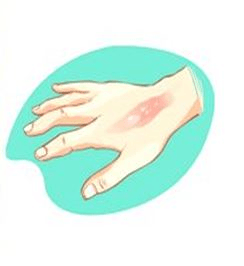ANTIMICROBIAL AND ANTIOXIDANT ACTIVITY OF PSIDIUM GUAJAVA. (GUAVA) MEDICINAL PLANT LEAVES USED IN FOLK MEDICINE FOR TREATMENT OF WOUNDS AND BURNS IN HUFASH DISTRICT AL MAHWEET GOVERNORATE–YEMEN
Keywords:
Antimicrobial, antioxidative, phytochemical, Psidium guajavaAbstract
Objective: Psidium guajava (PG) belongs to the family Myrtaceae that is believed to have active components that help to treat conditions like malaria, gastroenteritis, vomiting, diarrhea, dysentery, wounds, ulcers, toothache, coughs, sore throat, inflamed gums, and a number of other condition. The objective of current study was phytochemical screening of chemical constituents of Psidium guajava extract.
Methods: In this study methanolic and aqueous extracts of one plant namely Psidium guajava, were screened for the presence of phytochemical constituents and tested for their antimicrobial and antioxidant activity.
Results: TLC tests conducted revealed Rf values in the leaves for alkaloids, Flavonoids, Tannins, Phenols and Saponins(0.96-0.97-0.99-0.97-0.99) respectively. The antimicrobial activity extracts against four bacterial isolates Staphylococcus aureus, Escherichia coli, Pseudomonas aeruginosa and Klebsiella sp. and a single fungal isolate Candida albicans with concentrations (0.5 mg/ml, and 1,0 mg/ml) of the extract were added to the disc and respective solvent was used as negative control. The antioxidative activity of leaf was evaluated by using 1,1- diphenyl-2 picrylhydrazyl (DPPH), the results showed are 88.4%, highest from standard, ascorbic acid 87.5%.
Conclusion: The qualitative phytochemical analysis revealed the results showed presence of alkaloids, terpenoids, glycosides, resins, saponins, tannins, flavonoids, phenols, and amino acid were present in the methanol extract, with absence of glycosides, and amino acids in the aqueous extracts in leaves plant.

Peer Review History:
Received 1 February 2019; Revised 13 March; Accepted 27 April; Available online 15 May 2019
Academic Editor:
Dr. Iman Muhammad Higazy , National Research Center, Egypt, imane.higazy@hotmail.com
, National Research Center, Egypt, imane.higazy@hotmail.com
Reviewer(s) detail:
Ahmad Najib , Universitas Muslim Indonesia, Makassar, Indonesia, ahmad.najib@umi.ac.id
, Universitas Muslim Indonesia, Makassar, Indonesia, ahmad.najib@umi.ac.id
Dr. Md. Shahidul Islam , USTC, Chittagong, Bangladesh, S_i_liton@yahoo.com
, USTC, Chittagong, Bangladesh, S_i_liton@yahoo.com
Downloads

Published
How to Cite
Issue
Section

This work is licensed under a Creative Commons Attribution-NonCommercial 4.0 International License.









 .
.